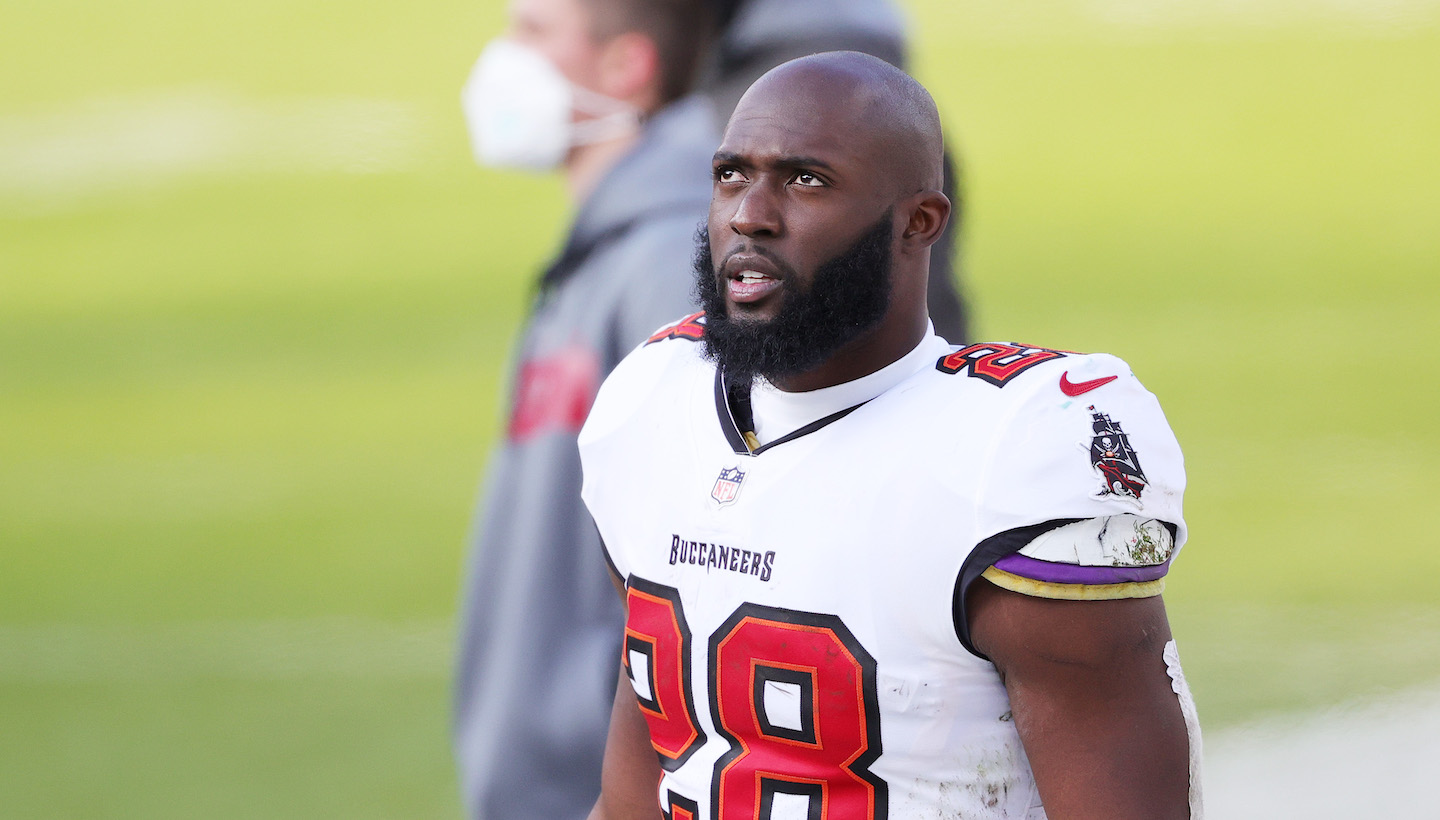Last week, Tampa Bay Times reporter Rick Stroud said on his podcast that Bucs running back Leonard Fournette is now "about a donut shy" of weighing 260 pounds. Fournette is listed at 228, which means, if Stroud's reporting is correct, he's put on about 30 pounds in the last six months. Fournette didn't show up to voluntary workouts during the spring, but Stroud is basing his observation on watching Fournette during Buccaneers mandatory minicamp in June.
“He certainly didn’t look like a guy who could play every down,” Stroud said. “Coaches were not happy, and that’s an understatement, when he didn’t participate in the OTAs, but then he shows up at the mandatory minicamp weighing damn near 260, and that’s not a good sign for a guy that you just spent a three-year contract on.”
Making weight or maintaining weight is always a topic of conversation in football. Patriots tackle Trent Brown's contract includes big weekly incentives every time he weighs in at 365 pounds or less this coming season, and the Giants cut Kelvin Benjamin last year after an argument over him reporting at 17 pounds overweight.
A player like Fournette can go basically six months, from the third week of January to the second week of June, without seeing anyone he works for in person. That's a lot of time to enjoy the sorts of indulgences that would lead to a 30-pound weight gain, and that got me thinking: Is the NFL uniquely equipped for these dramatic weight swings? Could athletes from the other major sports even gain 30 pounds in the offseason if they tried? Here is what I found out.
WNBA
I could not find any examples of a WNBA player gaining a ton of weight during the offseason, which makes sense given that many of them play in European leagues in the offseason in order to earn a living. Really, you could put any women's sport in this category, since so few of them pay their players enough to not have to find other leagues to play in during the offseason.
European soccer
These guys have the shortest offseason, from roughly May to July, and many of them have international tournaments to keep them busy during that time. Gonzalo Higuaín has been ribbed throughout his career for showing up to preseason a little bit chunkier, but I'm going to say it would be tough for anyone in such a running-heavy sport to pack on a cool 30 in such a short period of time.
NHL
I was surprised to learn that hockey had an instance of a 30-pound gain. In 2018, Jake Dotchin of the Tampa Bay Lightning reportedly showed up "30-35 pounds" heavier than his playing weight the previous season. The Lightning cut him for a breach of contract.
MLB
Vlad Guerrero Jr. told El Caribe that he weighed 280 pounds, 30 pounds heavier than his listed weight, when he reported to Blue Jays spring training in July of 2020. By November he'd lost 32 pounds.
NBA
Last year, Mavericks star Luka Doncic reportedly showed up at 260 pounds, 30 pounds over his listed weight. "I had a long summer," Doncic told reporters. "I had the Olympics, took three weeks off, and I relaxed a little bit. Maybe too much. I've just got to get back on track." And LeBron James reportedly gained 30 pounds during a six-week recovery from a groin injury in 2019. LeBron can point to limited mobility as as cause, but he completed his gain on an even more compressed timeline than Doncic. Impressive!
Luckily for Fournette, the NFL offseason is so long that he's had six weeks from when he was last seen in June until the start of Bucs camp. Plenty of time to make some more changes. Meanwhile, I will continue to be awed at how quickly and dramatically a professional athlete's body can change.






